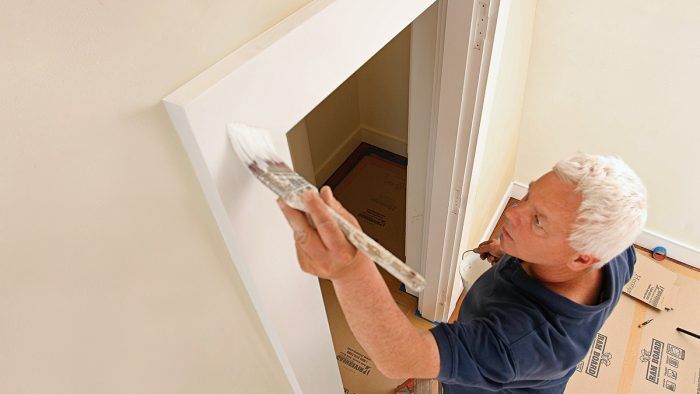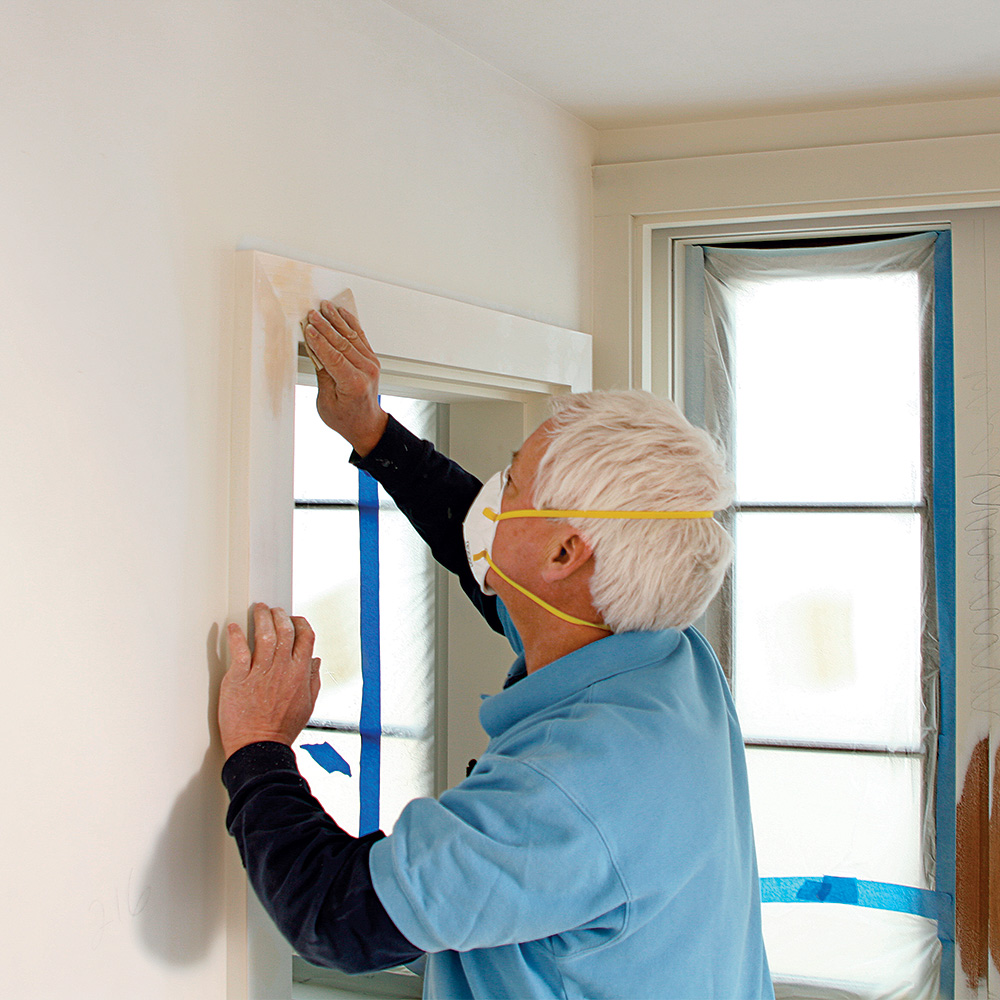Painting Trim the Right Way
A pro painter shares 8 essential steps to get a smooth, blemish-free finish when painting molding.

Synopsis: Master craftsman Tim Leahy offers eight steps from prep to final coat in “Painting Trim the Right Way.” The real work that makes or breaks a paint job is how you prepare the surface. If you’re painting baseboard, window and door casings, crown molding, and other interior trim, and you don’t do a good job of sanding, cleaning, and priming, the final coats of paint won’t look pristine. At the very worst, a poor prep job can make the finish coats fail. With detailed suggestions and helpful tips, he suggests: clean the air, clean and protect the room, fill any holes, sand surfaces and often edges, apply primer, sand primer coats, caulk seams, and apply two topcoats. Watch the video extra for this article.
Most people who are new to painting see the job in terms of applying the finish coat, but that’s just the icing on the cake. The real work that makes or breaks a paint job is how you prepare the surface. If you’re painting interior trim and you don’t do a good job of sanding, cleaning, and priming, the final coats of paint won’t look pristine. At the very worst, a poor prep job can make the finish coats fail. I work in high-end restoration, where the end result is paramount. Over the years, I have developed the following procedures for a great paint job.
Clean the air
Whether it’s your spouse, the construction manager, the homeowner, or any combination of the three, everyone needs to know when the painting stage of a job is set to begin. Other trades need to be out of the area, and the air needs to be right, especially for the last finish coats. The inside temperature should be between 55°F and 80°F, and the humidity level should be less than 50%. Humidity between 50% and 80% is less than ideal. When the humidity shoots over 85%, the paint won’t dry properly, which may cause blushing, sags, wrinkling, or film failure.
Air quality is very important, especially during the finish-coat stage, so we try to eliminate all airborne dust by using fans fitted with filters to draw in clean air and exhaust dusty air from the work area.
Clean and protect the room
A dirty floor and fresh paint don’t mix. The dirt gets airborne when kicked or when cords, hoses, or ladders are moved. Once everyone has left the area, the first thing we do is vacuum. Sawdust, dirt, and other debris on the floors and walls need to be cleaned off with a powerful vacuum that has non-marring attachments. Vacuums equipped with high-efficiency particulate absorption (HEPA) filters are the best, although they can be expensive.
Any hardware should be removed or protected. We remove hardware, tag it with tape, label it with a marker, and place it into plastic bags or clean cups. If there is a lot of hardware, I use a camera or a sketch pad to document the layout before taking everything apart.
If the area has finished floors, we use one of three levels of protection. If we happen to be priming in a room where the flooring hasn’t been finished, we tape down rosin paper, which helps keep the dust and dirt to a minimum. If the finish is in place, then we switch to a thicker, more protective paper product such as Ram Board, and sometimes even add a plastic layer to block moisture. The ultimate protection is paper first, followed by a layer of plastic and a layer of luan plywood.
For more photos and details, click the View PDF button below:







View Comments
I live in Arizona where air humidity can often be less than 25%. This means I have a hard time keeping a wet edge. Should I consider running a humidifier while painting?